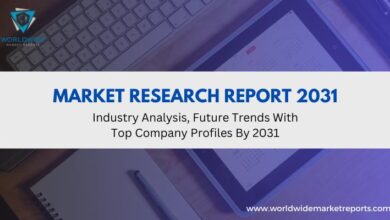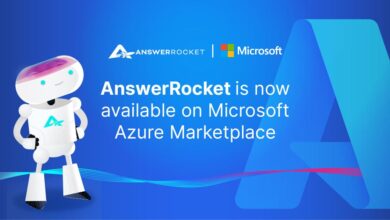How Small Businesses Can Take Advantage of Big Data

Big data technology is transforming nearly every industry quickly by providing actionable business information. Because of its effectiveness, even business leaders who are generally slow to adopt new technology are curious about implementing big data analytics and using its insights.
Businesses of all sizes want in on big-data analytics to cut costs, improve customer service, increase profits and identify and solve problems. We’ll explain big data and share how businesses can embrace big data analysis to make better decisions, anticipate future trends, capitalize on customer purchase patterns and capture vital market share.
If you’re looking for a career change, a shortage of talent in data analysis means ample opportunities abound in the big data space.
What is big data?
The term big data describes the massive volumes of data a business creates during normal operations. There are two general big data categories:
- Structured data: Structured data is highly organized and easily searchable.
- Unstructured data: In contrast, unstructured data is raw, unorganized and more challenging to collect, process and interpret.
In the past, businesses had ample unstructured data, but it was nearly useless because there was no way to analyze it and glean actionable insights. However, today’s machine learning (ML) algorithms and artificial intelligence (AI) tools help businesses extract meaning from their data.
By analyzing hidden patterns in data, businesses can unearth insights that help them anticipate future trends, eliminate inefficiencies and improve their marketing.
What is the importance of big data for businesses?
Big data enables better and faster decision-making, improving various business facets. Consider the following ways big data benefits businesses:
- Big data provides real-time insights: Once your big data analysis system is set up, new data is added automatically. The algorithms will analyze the new data instantly and give you valuable information in real time, enabling fast decisions and turning your business into an agile company.
- Big data helps you cut costs and reduce inefficiencies: Most businesses have inefficient processes and resource usage. Big data helps you identify less-than-optimal processes so you can fix them, saving your company money and time.
- Big data provides better quality control: You likely have processes in place to ensure product quality. However, these quality control measures may not be able to pinpoint the exact point of failure if there’s a problem. Big data analyzes your production throughout the entire manufacturing process, helping you consistently deliver high-quality products to your customers.
- Big data improves marketing results: You can’t read your customers’ minds, but you can analyze their purchase and return behavior to understand their likes, dislikes, price points and buying timelines. When you truly understand your customers, you can improve your email campaign personalization efforts to craft ideal offers.
- Big data creates a better customer experience: Better marketing, processes and products create a great customer experience with minimal friction. An excellent customer experience encourages customer loyalty, nurtures brand ambassadors, boosts repeat purchases and increases sales.
- Big data gives you a competitive edge: Big data provides faster and more accurate information. With these insights, you can be quicker to market, increase your profit margin and utilize your resources more efficiently than competitors. If your competitors also use big data, you’ll be able to keep up and maintain market share.
How can small businesses use big data?
Here are some of the ways businesses can use big data to gain an edge over their competitors:
- Reduce costs
- Identify and correct weaknesses and failures
- Design new products and services
- Conduct 360-degree customer reviews
- Improve marketing messages
- Identify and prevent fraud
- Increase operational efficiency
- Optimize pricing strategies
- Make smarter business decisions
- Reduce time to market
Big data analytics can help you measure digital marketing campaign return on investment (ROI) and improve your marketing initiatives.
How can small businesses get started with big data?
Here’s how to get started utilizing big data analytics to improve operations.
1. Decide on a big data strategy.
The first step is identifying the data you want to analyze. Next, create a plan to acquire high-quality new data easily.
2. Identify big data sources.
Even if you don’t realize it, you probably already have more than enough information to start a big data initiative. For example, you can source data analysis information from the following places:
- Email marketing reports
- Sales receipts
- Social media analytics
- Internet of Things
- Website analytics
- Streaming data from connected devices
- Publicly available data
- Data lakes
- Suppliers
- Customer relationship management (CRM) software
Email marketing data can help reduce abandoned shopping carts and accurately forecast campaign revenue.
3. Ask the right questions to get the most from big data.
Tracking sales data, customer retention statistics and gross revenue is a good start. However, in addition to tracking these metrics, you must ask insightful questions like the following:
- Which vendors offer the most value?
- Which product lines need the most improvement?
Then, review the granular details that reveal the consequences of your current operational practices. These insights can yield crucial improvements.
4. Create a system to access, manage and store big data.
You may decide to store your big data onsite in a data warehouse. Optionally, you could store it in a third-party cloud storage service, data lake, data pipeline or Hadoop.
If you use a third-party data storage solution, ensure it has robust cybersecurity and risk management practices.
5. Analyze the data.
It’s called “big data” for a reason. Data analysis involves evaluating a massive amount of information. As such, using the right tools and methods for your data analyses is essential. Consider the following data analysis best practices:
- Get a data specialist’s help: Nontechnical staff may glean limited insights from data analysis. However, you need a specialist’s expertise to extract full value from your data sets. An expert can help you understand what’s causing data patterns ― and why. If a full-time analyst isn’t in the budget, consider hiring a consultant who can point you in the right direction.
- Consider your business’s future: It’s crucial to analyze the potential future as well as the present. Technologies like predictive and prescriptive analytics can help you uncover insights that may reveal the future of your business environment.
- View real-time analytics via an executive dashboard: Real-time analytics can help you uncover crucial insights for decision-making in real-time and on-demand via an executive dashboard. An executive dashboard eliminates the need to consult an information technology specialist for a report. When you can access vital information via smartphone, laptop or any connected device, you and your team can get current, actionable data to help you outdo the competition. Furthermore, an executive dashboard can corral disparate data sources into one dynamic display.
- Consider all the data at your disposal: Even if your business is small, you probably generate ample information to take advantage of big-data systems. For example, your business’s spreadsheets, databases and CRM tools are likely packed with information. Use these data sources in combination with commercially available data sets and free tools like Google Analytics.
6. Consider using a third-party data analysis solution.
When it comes to analyzing your data, you don’t have to go it alone. Consider the following excellent big-data analysis solutions for small businesses:
- SAS: Developed by the SAS Institute, the SAS Viya software suite can mine, manage, retrieve and alter data from different sources, including web, social media and marketing analytics. The software performs a statistical analysis of your data to provide customer intelligence to small and midsize businesses.
- Kissmetrics: Kissmetrics was designed to help businesses increase their marketing ROI by identifying customer behaviors. You’ll gain insights to better understand, segment and effectively engage your customers.
- InsightSquared: InsightSquared connects to your business software to automatically collect data and generate actionable insights. The platform integrates with Salesforce, Google Analytics, QuickBooks, Zendesk and more to provide marketing, staffing and sales analytics.
- Watson Analytics: IBM’s Watson analytics products make advanced, predictive business analytics accessible to small business owners without data science experience. The platform can integrate a vast data set from multiple departments, including sales, finance, marketing and human resources, and identify patterns and potential problems.
7. Present the data you’ve gathered and analyzed.
Once you’ve analyzed your data, you must present it in an easily digestible format that helps you and your team make informed decisions. Data visualization tools can help.
Trusted productivity tools like Microsoft Excel and Microsoft PowerPoint can help you create data-driven presentations, but those programs are limited. Many of the tools we listed above can generate clear, insightful reports. Alternatively, interactive executive dashboards let you present visually compelling presentations your team can engage with quickly, no matter what their technical expertise level is.
8. Use data-driven insights to make decisions.
It isn’t enough to analyze and present your data; you must use its insights to make and implement decisions in your business. At first, it may be challenging to trust what the data is telling you, especially if it conflicts with how you’ve done things in the past or doesn’t align with management’s “gut feelings.” However, big data provides insights you wouldn’t have arrived at on your own, so trust the process.
Poor data quality and algorithm flaws can yield incorrect insights. Review all your business intelligence initiative’s elements carefully to ensure your big data strategy is high quality and reliable.
What is the future of big data?
Big data is still in its infancy. The future of big data analytics will likely bring the following:
- Big data costs will come down: As AI improves and more companies take advantage of big data’s opportunities, competition will increase and data storage and analysis costs will come down.
- Big data will analyze more types of information: Words and numbers in databases and files comprise much of the data analyzed today. However, ML and AI are improving at analyzing other data types, including videos, images and sounds. Analyzing more data types can help companies improve sales and service. For example, analyzing someone’s voice tone, volume and talking speed could help you better understand customer emotions and adapt service offerings.
- Big data will create better market predictions: By incorporating multiple data sources from the internet about economic forces and combining that with supplier information and customer data, companies can make more accurate supply chain predictions and improve purchasing, marketing and investment decisions.
- Big data will escalate security concerns: As big data becomes more common, company data and analysis will become targets of competitors and hackers. To protect this newly acquired asset, businesses and their third-party data storage and analytics companies must bolster their cybersecurity defenses.
Big data and data analytics FAQs
What makes data qualify as big data?
Big data is defined by the three V’s: bigger variety of data, a larger volume of data (minimum of 1 terabyte) and a higher velocity of data. In other words, with big data, many different types of information are coming in fast. Another two V’s ― value and veracity ― describe big data that is truly useful and accurate.
What risks and concerns are there in connection with big data?
As with any complex process, using big data presents risks. Security is paramount, along with the imperative to protect customer privacy and company data and insights. Poor data quality and biased or inaccurate algorithms are also concerns because skewed results will ensue.
What is Hadoop?
Hadoop is an open-source framework for storing, organizing and analyzing unstructured data sets.
Does big data replace human managers?
While we can’t tell the future, currently, big data requires humans with experience in the industry and company to interpret the data and make actionable decisions.
What is the most common way to store and analyze big data?
Many businesses use cloud solutions to store, organize and analyze big data.
Ryan Ayers contributed to this article.



